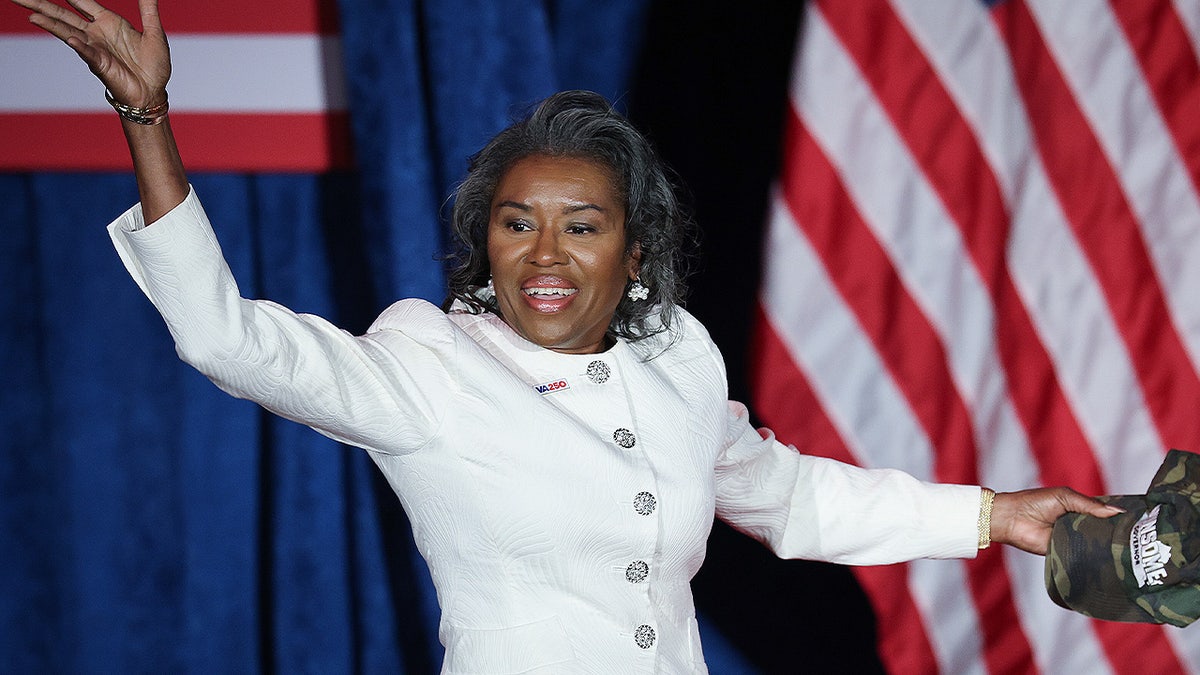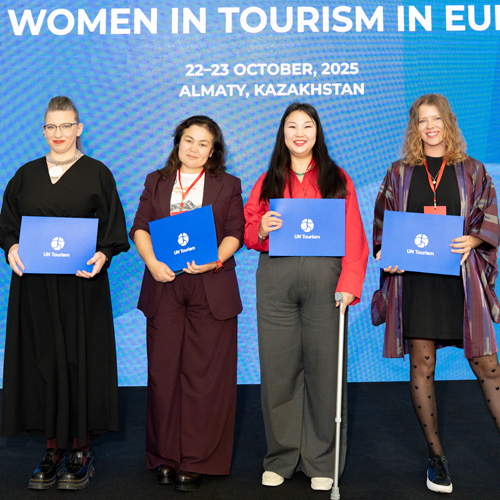Report on Political Discourse and Sustainable Development Goal 5 (Gender Equality)
Introduction
A recent media discussion concerning the Virginia gubernatorial election has brought to the forefront critical issues related to gender equality and female political leadership. The discourse highlights the complexities of achieving Sustainable Development Goal 5 (Gender Equality), particularly Target 5.5, which aims to ensure women’s full and effective participation and equal opportunities for leadership in political life.
Context of the Gubernatorial Election and SDG 5
The Virginia gubernatorial race is a notable event in the context of gender representation in politics. The election guarantees that the commonwealth will elect its first female governor, a significant milestone that directly supports the objectives of SDG 5.
- Republican Candidate: Winsome Earle-Sears
- Democratic Candidate: Abigail Spanberger
Media Commentary and its Relation to SDG 10 (Reduced Inequalities)
During a segment on MSNBC’s “Morning Joe,” panelists discussed the competitive nature of gubernatorial races involving female candidates in Virginia and New Jersey. The commentators suggested that sexism and misogyny could be contributing factors, reflecting broader societal challenges addressed by SDG 10 (Reduced Inequalities), which seeks to eliminate discriminatory practices.
Panelists expressed concern that highly qualified female candidates, such as Abigail Spanberger and New Jersey’s Mikie Sherrill, were not leading by wider margins. Jonathan Lemire suggested the United States may have a “misogynistic trap” that hinders female candidates, a barrier that SDG 10 aims to dismantle.
Response and Implications for SDG 16 (Peace, Justice and Strong Institutions)
In response to the media segment, Republican candidate Winsome Earle-Sears highlighted the inherent progress of the election. Her reaction underscores that the presence of two female primary candidates from opposing parties is a tangible step toward building the inclusive and representative institutions promoted by SDG 16 (Peace, Justice and Strong Institutions). Target 16.7 of this goal specifically calls for ensuring responsive, inclusive, and representative decision-making at all levels.
- Media panelists suggested sexism was a factor impacting the perceived competitiveness of the race.
- The discussion referenced historical challenges for female presidential candidates in the U.S. as evidence of systemic inequality.
- Candidate Winsome Earle-Sears responded by noting that the election would, regardless of the outcome, result in the state’s first female governor, marking a clear advancement for gender equality in leadership.
Analysis of Gender Representation in Politics
Conclusion
The incident illustrates the complex and often contradictory nature of progress toward gender equality in the political sphere. While the Virginia election represents a definitive achievement for SDG 5 by ensuring female leadership at the state’s highest level, the surrounding public discourse indicates that perceptions of gender bias and inequality, central to SDG 10, remain prevalent. The continued dialogue is essential for fostering the strong and inclusive institutions envisioned in SDG 16, where female participation is not only present but also free from discriminatory barriers.
Analysis of Sustainable Development Goals in the Article
-
SDGs Addressed in the Article
The article primarily addresses issues related to two Sustainable Development Goals:
-
SDG 5: Gender Equality
This goal is central to the article’s discussion. The entire piece revolves around female candidates in gubernatorial races and the suggestion by media panelists that sexism and misogyny are impacting their campaigns. The debate about whether voting against a female candidate is “sexist” and the reference to a “misogynistic trap” in American politics directly connect to the core mission of SDG 5, which is to achieve gender equality and end all forms of discrimination against women.
-
SDG 16: Peace, Justice and Strong Institutions
This goal is relevant as it aims to “promote peaceful and inclusive societies for sustainable development.” The article discusses the participation of women in high-level political processes, specifically running for governor. The election of women to such powerful positions is a key component of building inclusive and representative institutions, which is a fundamental aspect of SDG 16.
-
-
Specific SDG Targets Identified
Based on the article’s content, the following specific targets can be identified:
-
Target 5.5: Ensure women’s full and effective participation and equal opportunities for leadership at all levels of decision-making in political, economic and public life.
The article directly discusses women’s participation and leadership in politics. It highlights several female candidates: Winsome Earle-Sears and Abigail Spanberger in Virginia, and Mikie Sherrill in New Jersey. The statement that either Earle-Sears or Spanberger “would become the commonwealth’s first female governor if elected” is a clear example of women reaching the highest levels of political leadership. The concerns raised by the MSNBC panelists about the challenges these women face due to their gender underscore the ongoing struggle for “equal opportunities for leadership.”
-
Target 16.7: Ensure responsive, inclusive, participatory and representative decision-making at all levels.
The focus on gubernatorial races involving prominent female candidates from both major parties speaks to the goal of making decision-making bodies more representative of the population. The media commentary, such as Mika Brzezinski’s statement, “we need them,” referring to female candidates, emphasizes the perceived importance of having women in government to ensure more inclusive and representative governance.
-
-
Indicators Mentioned or Implied
The article implies several indicators that can be used to measure progress towards the identified targets:
-
Indicator related to Target 5.5 (Proportion of women in leadership positions):
The article provides specific, albeit not statistical, evidence related to the proportion of women in high political office. It explicitly mentions that Virginia is guaranteed to have its “first female governor,” which is a direct measure of progress in female representation at the state executive level. The mention of Winsome Earle-Sears as the current “lieutenant governor” is another data point. Furthermore, the reference to the Democratic party having “nominated women two of the last three elections for the presidency” implies an indicator of women’s participation at the highest national level.
-
Indicator related to Target 16.7 (Proportion of positions in public institutions held by women):
The article implicitly points to this indicator by naming multiple women running for or holding public office. The candidacies of Winsome Earle-Sears, Abigail Spanberger, and Mikie Sherrill for governorships serve as examples of women seeking top positions in public institutions. The outcome of the Virginia election, which will result in a female governor, provides a concrete measure of change in the representation of women in these roles.
-
-
Summary Table of SDGs, Targets, and Indicators
SDGs Targets Indicators SDG 5: Gender Equality 5.5: Ensure women’s full and effective participation and equal opportunities for leadership at all levels of decision-making in political, economic and public life. Implied Indicator: The number and proportion of women running for and holding high-level political office.
(Article evidence: Mentions female candidates for governor in Virginia and New Jersey, the fact Virginia will elect its “first female governor,” and that women were nominated for the presidency.)SDG 16: Peace, Justice and Strong Institutions 16.7: Ensure responsive, inclusive, participatory and representative decision-making at all levels. Implied Indicator: The representation of women in top executive positions within public institutions.
(Article evidence: Focuses on the gubernatorial races and the significance of having female leaders like Spanberger, Sherrill, and Earle-Sears in these roles to ensure representative governance.)
Source: foxnews.com







